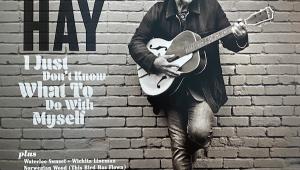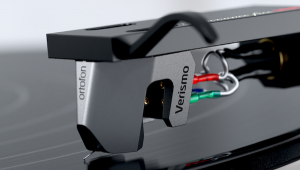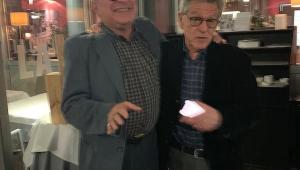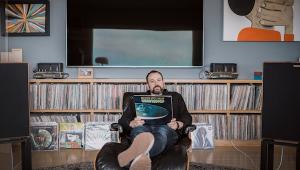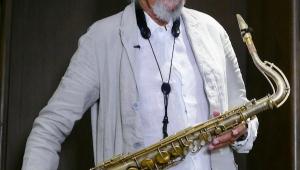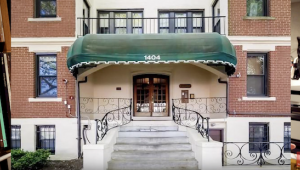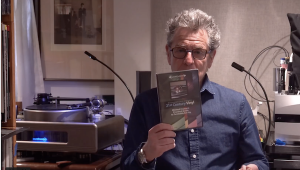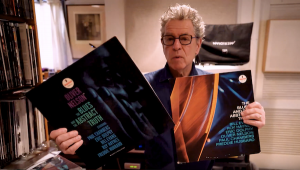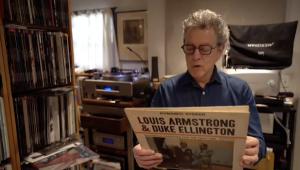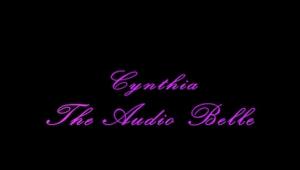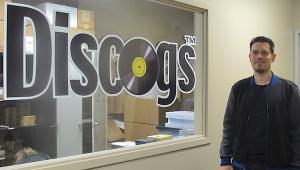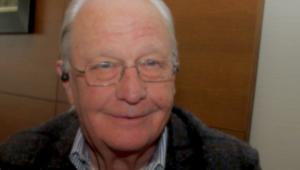Preservation Hall: Back to the Future, Pt. 2
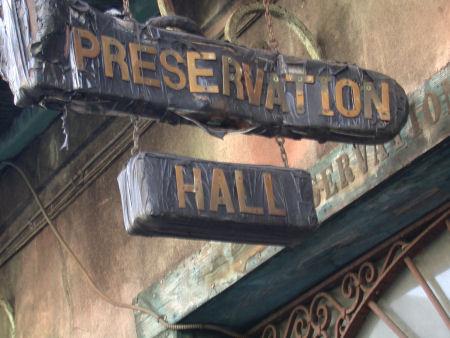
Although both he and his older brother Russell took music lessons as kids, what Ben Jaffe wanted more than anything entering high school wasto become a top-notch athlete, excelling at soccer and running short distances at track-and-field events. He had the competitive fire, but was sidelined by a genetically inherited form of rheumatoid arthritis that surfaced when he was in his teens
The strong desire to compete, though, says something about Jaffe that might not be obvious to the casual observer. In conversation, the most striking thing about Jaffe is his eyes—icy blue, apparently placid, and arresting. The same clear, penetrating gaze is evident in pictures of his mother, even in black-and-white photos. Physically, his appearance resembles that of his father, not in the stocky build so much, but more in the pleasant demeanor and benign facial expression that seem most comfortable for him. But it doesn’t take long in getting to know him to discover that beneath the casual exterior lies a vigorous and sharply focused intellect, one just as prone to action as thought
And even though he never envisioned an adult life at Preservation Hall, Ben Jaffe could hardly have escaped the example of a living tradition everywhere around him during his formative years. Take, for example, the stand-up bass he now owns and plays. It was a gift from his father on the occasion of Ben’s 15th birthday, one year before his father’s untimely death from an untreatable form of skin cancer at the age of 51
The beat-up old wooden bass at one time had been the house instrument available to any band recording in the small-but-legendary French Quarter studio run by Cosimo Matassa, a makeshift set up where dozens of national and regional R&B hits were recorded in the 1950s by artists that included Fats Domino, Dr. John, Ray Charles, and Little Richard.
Immersed in Modern Jazz and Leaving It All Behind
The instrument took on added meaning just one year after his father’s death, the summer before his senior year of high school. With competitive sports no longer an option Jaffe’s mother decided her son’s energies might better be channeled toward music. So she enrolled him in the Summer Arts Camp at Interlochen Center for the Arts, one of the premier gatherings for talented teenage musicians and artists from all around the country.
It was not Jaffe’s choice to go, but the experience cleared the way for the path his life would take. “My mother forced me to go,” he recalled recently. “She literally bought the ticket and put me on the plane. That summer changed my life. I saw what it took to be really, really good at music, that music could be just as challenging as sports was.”
Back in New Orleans the following semester, he signed up to study at the New Orleans Center for the Creative Arts, an after-hours arts academy for high school students that by then had already achieved prominence for turning out some of the city’s most successful musicians, including Wynton Marsalis, Harry Connick, Jr., and trumpeter/composer Terence Blanchard. But even after another summer at Interlochen, Jaffe was still not ready to commit to music. He was accepted at Oberlin College where he intended to study in the liberal arts curriculum, majoring in English literature or writing. But before he could get started, he succumbed to the lure of the school’s Conservatory of Music and its newly launched performance major in jazz studies.
At Oberlin, Jaffe completely immersed himself in the world of modern jazz. He set himself the task of studying the entire history of jazz bass, from Jimmy Blanton and Charles Mingus to Ron Carter and Charlie Haden. He spent long hours in the Conservatory’s jazz library where he could study annotations of every John Coltrane solo ever recorded. By his own admission, for four years Jaffe never gave a thought to traditional New Orleans jazz, never even thought about Preservation Hall, concentrating instead on building his chops as a modern jazz musician, a working band leader, and a successful band manager. Just as he was preparing to graduate, though, a moment occurred—riding a lightning bolt of coincidence—that would forever change his life.
Rehearsing his touring septet for a senior recital, Jaffe was struck by the difficulty band members encountered replicating what for Jaffe was second nature—the rituals, swing, and emotional freedom of traditional New Orleans jazz. At just about the same time, Jaffe got some interesting news from home. The Preservation Hall Jazz Band was booked for a two-month residency in Paris—the result an extravagant gesture by a well-off Parisian restaurateur and devoted New Orleans jazz fan—and the band’s aged bass player, James Prevost, was reluctant to go.
Maybe Ben wouldn’t mind sitting in for him? It didn’t take Jaffe long to make his decision. After removing the electric pick-ups from his bass and stripping the instrument of its steel strings (gear appropriate to playing modern jazz), he replaced them with traditional gut strings, packed his bags for Paris, and never looked back.
Enlisting Impassioned Fans, Dismissing the Harshest Critics
What was it like to be a recent college grad on the loose in Paris for the better part of a summer, your only serious obligation a nightly gig at an upscale French restaurant?
Ask Ben Jaffe and he will immediately start talking about the guys in the band, about how playing with them every night during that summer gave him a chance to get to know them better. Only he won’t refer to them as “the guys,” preferring instead to call them “the gentlemen,” one of many unspoken customs associated with the life of Preservation Hall. The practice conveys a kind of respect for musicians who might otherwise be regarded as marginal social figures, but it has another purpose, too.
Regarding the members of the Preservation Hall Jazz Band with a kind of casual formality reinforces the idea that the music they play has at its very center a respect for individuality, for the notion that each of us represents a unique world of experience apart from social roles or circumstances.
This understanding—that the miracle and mystery of human existence animate the very core of the music—helps explain both its universal appeal and its general tendency to be vastly underestimated and misunderstood. For those who find the music appealing, the attraction often takes on the dimensions of spiritual passion or cult adherence.
One of the music’s most dedicated fans has been Woody Allen, the comedian and filmmaker who for many years maintained a standing gig at a New York City nightclub playing clarinet in New Orleans-style band. Allen took as his role model the jazz revival clarinetist George Lewis, and shortly after Lewis’ death came to New Orleans to record the soundtrack to his 1973 film “Sleeper”, sitting in on clarinet with the Preservation Hall band.
Bandleader and trumpeter Percy Humphrey was impressed by Allen’s ability and sense of respect. “He has a wonderful ear,” Humphrey said. “He did exactly what you should do when you sit in with another man’s band. He played along with what we played. He didn’t try to be a celebrity.”
But despite the music’s ability to please audiences around the world and elicit the intense devotion of fans, it has often been dismissed or neglected by music fans in general and scholars in particular, who tend to view traditional New Orleans jazz mainly as an anomaly that doesn’t easily fit their narrative version of musical evolution. The harshest critical attacks on the music played at Preservation Hall tend to categorize it as “folk music” played by second-rate musicians.
From that perspective, musical virtuosity and cultural sophistication become primary indicators of value, with classical music and modern jazz regarded as far more deserving of our close attention.
This view is bolstered by our own intuitive experience—just on the face of it, isn’t modern jazz, which requires formal knowledge and imposes high standards of creative improvisation, much more difficult to master?
It might appear so, but consider this: In the spring of 1994 basketball star Michael Jordan—then regarded as the most talented athlete in the world—announced he was going to try his hand at professional baseball. The sports world watched with cautious fascination. Would Jordan then in his prime, become the first athlete ever to master and dominate two professional sports?
The case made on his behalf was fairly credible. Baseball is played at a relatively sedentary pace with emphasis on basic skills and individual performance, while basketball requires more-sophisticated physical skills displayed at breakneck speeds under the constant pressure of physical contact.
Wouldn’t that make baseball easier to master than basketball? It turned out not to be the case. After a full season of minor-league baseball, Jordan was still playing so badly that Sports Illustrated ran a cover story headlined: “Bag It, Michael. Jordan and the White Sox Are Embarrassing Baseball”. The following winter, Jordan traded his baseball cleats for high-performance sneakers and returned to the basketball court.
;A Family Affair: The Birth of Jazz and the British Invasion
So, what is traditional New Orleans jazz? One way to think about it is the same way we think about variations in the way people speak, especially informally. It’s not just that those who’ve been raised in the southeast U.S., for example, have what we call an “accent” that distinguishes them from those who’ve been raised in other parts of the U.S.; they also have a different sense of shared history, of local customs, of reading behavior, and of personal expression. We might say their way of speaking is “idiomatic,” which means that each instance of expression really exists within a larger spectrum of cultural reference.
In that way, traditional New Orleans jazz could be defined as a musical idiom, which would place it in a larger context of folk music and local forms of popular musical all over the world. But there’s something else about traditional New Orleans jazz that sets it apart, something reflected in the fact that it’s existed for a relatively long time and can claim a cultural influence that’s become evident around the world.
While the music played at Preservation Hall is definitely not early jazz (a fact easily confirmed by a simple blindfold listening test), it does bear a family connection. In reality, the musicians recognized in the 1940s and 1950s who developed the informal style of concert music that we now know as traditional New Orleans jazz constitute a second generation of jazz pioneers, descendants of the first generation who chose to stay home rather than look toward New York, Chicago, or Los Angeles to pursue a full-time music career.
The music they played reflected New Orleans jazz as it evolved beyond the spotlight in the 1920s and 1930s, with further alterations for 1940s popular music and the expectations of new audiences and the new setting of concert performances.
Offering an easily accessible embodiment of living jazz history, the music of the New Orleans revival exerted a surprisingly strong influence on 20th-century popular music. In the U.S. it became Dixieland, a more-formalized version of New Orleans jazz played mainly by white musicians for white audiences. In England, a similar movement emerged—white youths devoted to music played by older black musicians—but it evolved instead into a guitar-based version of that music.
Called “skiffle,” (for instance, these two from Lonnie Donegan: “Does Your Chewing Gum Lose Its Flavor on the Bedpost Overnight?” and “Rock Island Line”-ed) it became a national craze and eventually inspired “The British Invasion—that mid-1960s influx of bands from England raised on American jazz, blues, and rockabilly.
It also surfaced in a Dixieland-related version called Trad Jazz, which dominated the same British sales charts The Beatles subsequently hijacked.
Departing from Jazz History, Sharing Sources of Inspiration
In the standard outline of 20th-century jazz history, the music of the New Orleans jazz revival appears most prominently as counterpoint to a new style of jazz, called bebop, which also emerged during the 1940s and 1950s. At the time, writing about jazz had only recently become an accepted form of journalism and scholarship. As a new generation of jazz writers tried to establish a clear view of what jazz was and what it wasn’t, these two new developments—one clearly linked to affection for the past, the other representing innovation—suddenly became opponents, each insisting on its own interpretation of the essence of jazz.
In hindsight, that argument seems both exaggerated and irrelevant. Both bebop and the New Orleans jazz revival represent significant developments in post-WWII jazz history, with one significant difference: the innovations of bebop immediately affected the evolution of jazz, while the New Orleans jazz revival suggested an immediate departure from jazz history along with an underlying theme that would not surface until several decades later, when related arguments arose around the so-called “neoclassical” movement led by new Orleans trumpeter Wynton Marsalis.
Taking an even wider view of American history, both controversies seem animated by the constant tension in American life between nostalgia for the past and a profound belief in progress, in the promise of a better future.
Departing from the mainstream of jazz history in the 1940s and 1950s, the New Orleans revival actually set off a series of similar movements. These include the urban folk revival of the early 1950s, the mid-1950s skiffle craze in England, both the blues and bluegrass revivals of the late 1950s and early 1960s, and the British Invasion of the mid- and late-1960s. All shared a reliance on recordings of past music for inspiration, establishing a new element, a new driving force in music history. That same impulse, learning from and resurrecting music heard on old records, would subsequently fuel a host musical revolutions from country rock to punk to hip hop.
Late in the 20th century we came up with a new label for this phenomenon—roots music—which refers to both the sources and new styles that can be traced to forgotten eras of recorded music of the past.
Identifying a roots music influence in 20th century popular music changes our view entirely, combining vaudeville blues and hillbilly music, R&B and rockabilly, even early funk and disco, under a single tent. Within that tent, the closest relative to New Orleans revival jazz is probably bluegrass.
Both emerged in the early 1950s, both represent concert forms of earlier dance and/or parlor music, both rely on group renditions of familiar repertoire, and both use those renditions to frame a series of instrumental solos. Both also rely heavily on spirituals and gospel music, occasionally sharing the same deep sources of inspiration.
Regarded, then, as roots music, the 1940s New Orleans jazz revival, expressing both strong ties to Afro-Caribbean rhythms and a message of faith and endurance, probably should be described as our earliest form of 20th-century soul music


